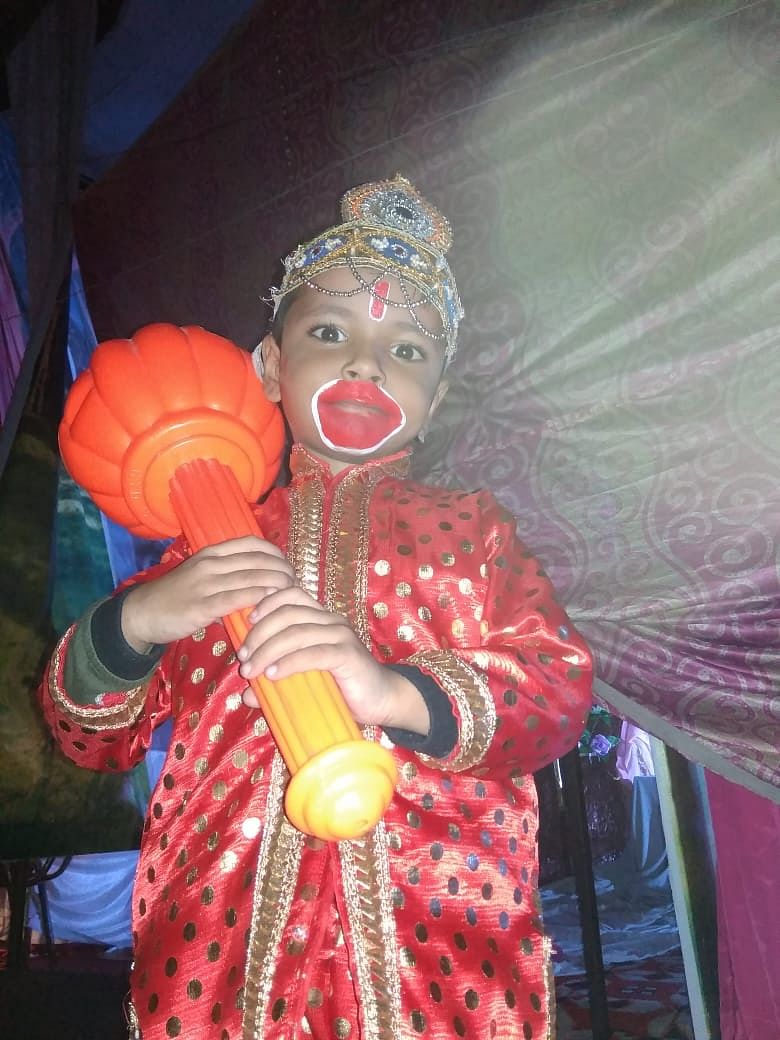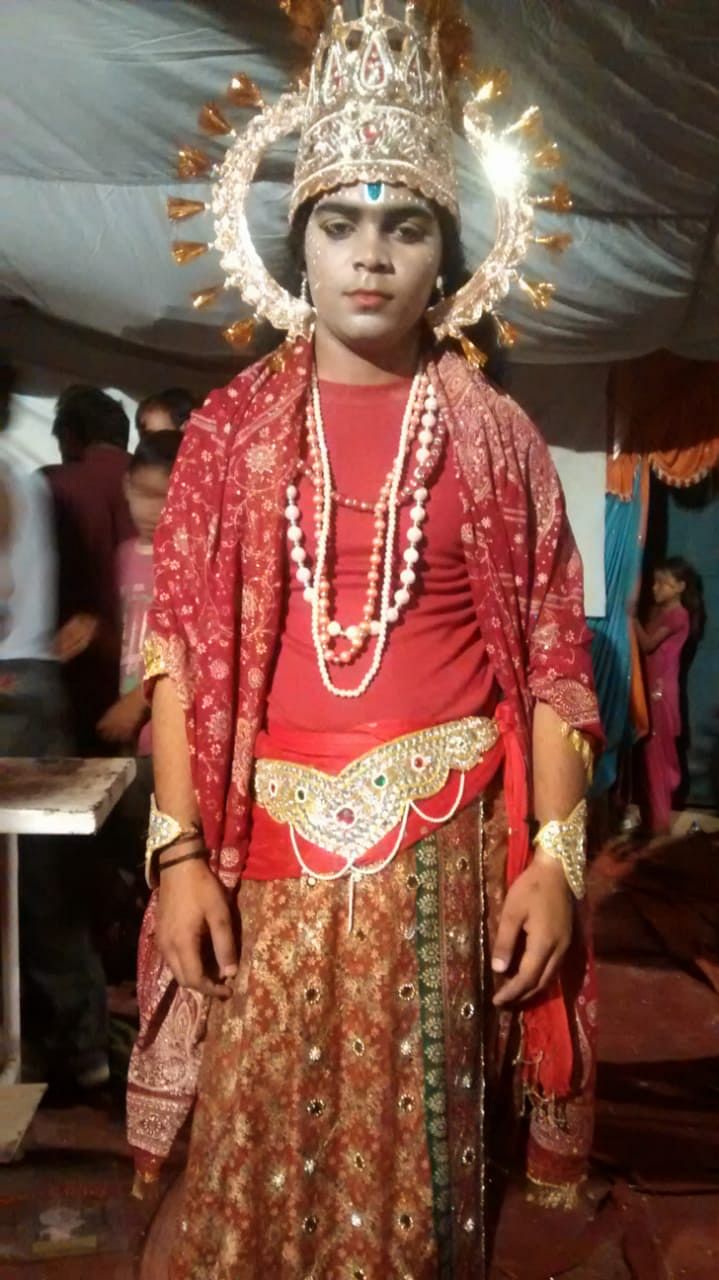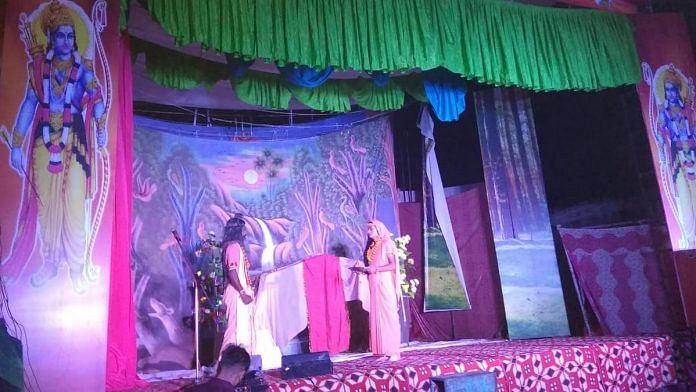Faqir Mohammad has been organising Ramlilas for 20 years, and he’s far from the only Muslim who’s enthusiastic about this annual event in Punjab.
Rajpura/Chandigarh: Far from New Delhi — where the nation’s political narrative revolves around mandir and masjid, Hindu and Muslim — lies the small industrial town of Rajpura in Patiala district. Here, the divide is blurred, thanks in particular to a 20-year-old Ramlila organised by a Muslim family.
Faqir Mohammad, the 56-year-old head of the family, says from the moment he laid eyes on a Ramlila pandal as a child, he was enchanted by it.
Also read: All the Hindus and Muslims in this Haryana village are in on a terrible secret
The pandal he saw was set up by the Sri Adarsh Mahavir Club, which used to host the largest Ramlila in town for over six decades, before shutting down some years ago.
“I started doing small chores for the organisers. Over the years, I got the hang of it and became part of the organising committee. Later, when it branched off into two different societies, I felt confident of coordinating the entire show myself,” he says.
He now organises the Ramlila for the Shree Ram Parivaar Society.
After Partition, his family shifted from a nearby village to Rajpura town. “I was a roadside tailor. Later, I managed to get a gas agency, and finally, I became a road patti
contractor. Now, I am considered one of the more well-off persons in Rajpura,” Mohammad says.
“All this has happened because of this. From the day I stepped into the Ramlila, I have progressed in life. I go to the masjid and offer namaaz too. For me God is one, only His name and forms differ.”
A family affair
Mohammad’s entire family contributes to the Ramlila. His younger son — Ajay Mohammad — plays Lakshman, and grandson Sheffi plays a member of the vaanar sena. His elder son Shaukat Ali takes care of the stage, sound and lighting. His wife stitches the curtains and even repairs the costumes.

Every tiny detail of conducting the Ramlila is taken care of, as is the ‘maryada’ (dignity) it demands.
“This time, we have called the musicians and bhajan singers from Vrindavan. They are very good,” he says.
Completely engrossed in the Ramlila, Mohammad says he often forgets the dates of Eid, but already knows that Dussehra will be on 7 October next year.

“I wait the whole year for these 10 days. It is such a deeply satisfying thing to do,” he says.
“If you understand the Ramayana closely, you will realise it has no untruth. It is pure. And it is a commentary on relationships too — how a father, a mother, a brother, a husband, a son should be. And by watching Ramlila, if even one person is reformed every year, it is a big achievement.”
Panjab University’s Urdu Ramlila
Another example of India’s unity in diversity is the Ramlila organised by the employees of the Panjab University, Chandigarh, for which an Urdu script is used.
“When the Panjab University was in Lahore, the Ramlila was started by the Shri Arjuna Amateur Dramatics Club. The script was in Urdu,” says Sanjay Kaushik, general secretary of the club.
“The Ramlila shifted wherever the university shifted after partition. The Urdu script remains the same, but we’ve had to transcribe it into Devanagari script for the new actors to be able to read it.”
While the content obviously doesn’t vary much from place to place, to hear Ram and Lakshman use words like ‘shakal’ (face), ‘shaqs’ (person) and ‘bhaijaan’ (dear brother) is a unique experience. And it’s not even the classical Persian-ised Urdu that the poets used.
“The script is in an Urdu which the general public can understand,” Kaushik says.
Muslims and Sikh actors chip in
Of course, there are Muslim and Sikh actors who perform in Ramlila shows in Chandigarh. In Sector 7, for example, at the Ramlila organised by the Navyug Ramlila and Dussehra Committee, mechanical engineer Shehzaad Alam played Hanuman for several years.
“This year I have to go abroad so I opted out,” he says.
Also read: What explains the Muslim silence in the face of BJP’s aggressive Hindutva?
Nasim plays any role he is given, while Jaipreet, a Sikh, also chips in.
“We are proud that we have them with us. There is no difference,” says Vikas Sood, the organiser.
Gurjit Singh, another Sikh, plays a rakshas (demon) in the Sector 22 Ramlila organised by the Chandigarh Ramlila Committee.
“We don’t even think about religion when we are doing Ramlila,” he says.
Interestingly, the largest Ramlila in Chandigarh — at Sector 17 — is organised by the Shri Ram Leela Committee, whose vice-president is S.M. Khan.



